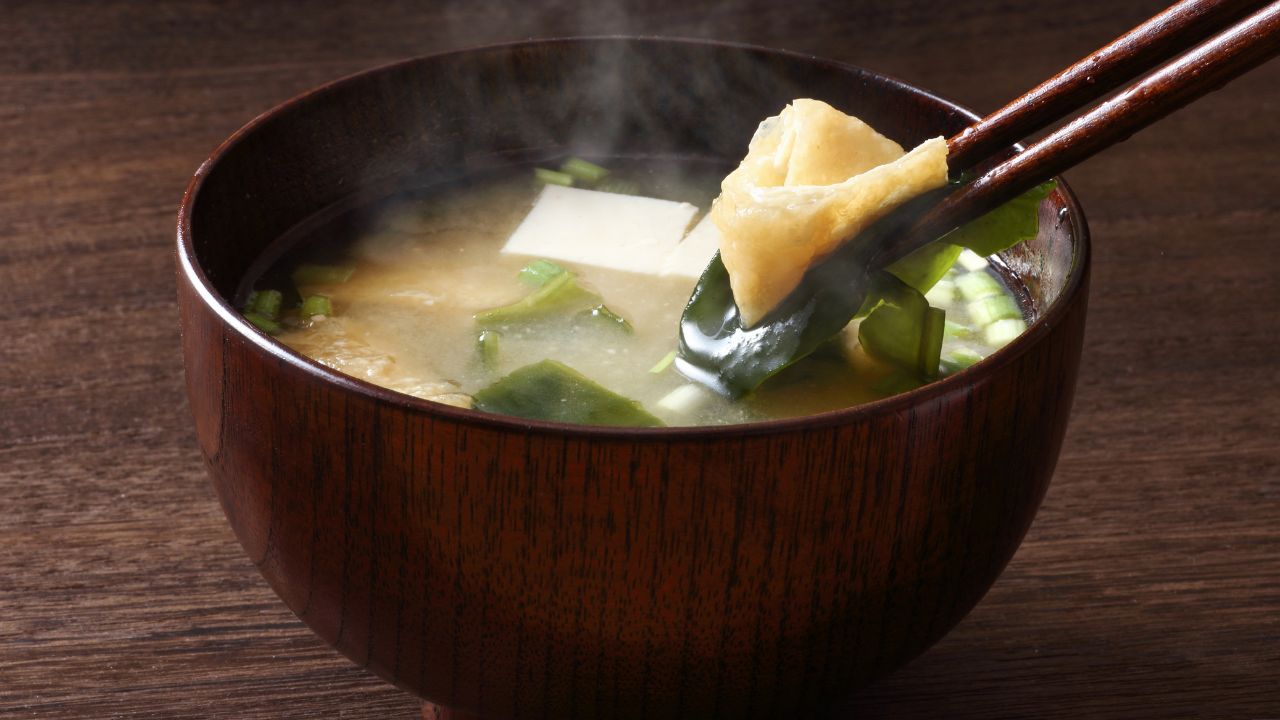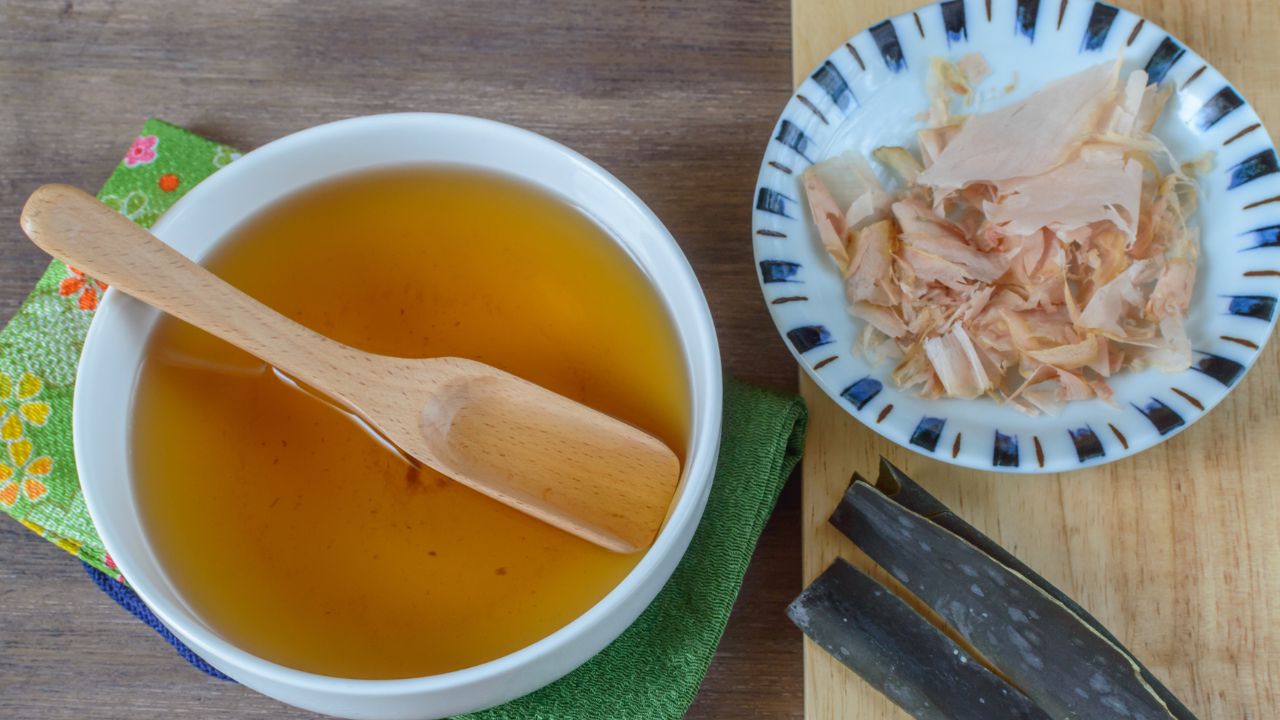
Are you eager to master the art of Japanese cuisine? Look no further – today, we’re diving into the world of umami-rich flavors with a step-by-step guide on how to make miso soup. Whether you’re a seasoned home chef or a kitchen novice, this classic Japanese dish is both comforting and surprisingly simple to prepare. Join us on a culinary journey as we unlock the secrets of this savory broth at Trendbbq. From selecting the finest ingredients to mastering the delicate balance of miso, dashi, and seasonal garnishes, we’ll equip you with the skills you need to craft the perfect bowl of miso soup right in your own kitchen. Let’s get started!
Table of Contents,
1. What Is Miso Soup?
Miso soup is a traditional Japanese soup made from a fermented soybean paste called “miso.” It is a staple in Japanese cuisine and is widely enjoyed both in Japan and around the world. Miso soup is known for its savory, umami flavor and typically includes other ingredients like seaweed, tofu, and green onions.

2. How to Make Dashi Stock for Miso Soup
Let’s dive into the heart of making miso soup – creating that flavorful dashi stock. Think of it as the secret sauce that gives miso soup it’s delightful taste. Dashi stock is all about simplicity, made from a few key ingredients: water, kombu (dried kelp), and katsuobushi (dried bonito flakes).
Here’s your step-by-step guide on how to whip up this essential dashi stock for your miso soup:
2.1. Step 1: Prepping the Kombu
- Begin with a piece of kombu, roughly around 4 inches long. Give it a rinse under cold water to remove any impurities or excess salt.
- In a spacious pot, place the cleaned kombu with 4 cups of water, and let them cozy up together for about 15 minutes.
2.2. Step 2: The Boil
- Fire up the stove to medium-high heat, bringing the kombu and water combo to a boil.
- Once it starts to bubble, bid farewell to the kombu – you won’t be needing it anymore (but don’t toss it, it can still be useful for another dish).
2.3. Step 3: Adding the Katsuobushi
- Now, it’s time to introduce 1/4 cup of katsuobushi, those dried bonito flakes, to the simmering water.
- Reduce the heat to low and let it gently simmer for approximately 10 minutes, giving it a stir now and then.
2.4. Step 4: The Finishing Touch
- To wrap it up, strain your dashi stock into a bowl or measuring cup using a fine-mesh strainer or cheesecloth.
- As for the used katsuobushi, you can save it for another culinary adventure or bid it farewell, whichever suits your fancy. You should now have around 3 cups of flavorful dashi stock, ready to elevate your miso soup to new heights.

3. How to Prepare Miso Paste for Miso Soup
Here’s how to prep the miso paste for your miso soup:
- Measure the miso paste: Start by grabbing about 1/4 cup of miso paste. That’s roughly 4 tablespoons, but feel free to adjust the amount to match your taste.
- Dissolve the miso paste: Now, let’s get that miso paste to play nice with the rest of our ingredients. Take a small bowl or measuring cup and dissolve the miso paste in some dashi stock. About 1/2 cup of dashi stock should do the trick. Give it a good whisk to make sure there are no lumps – we want this to be smooth.
- Add the miso paste to the dashi stock: The final step here is to add your dissolved miso paste to the rest of your dashi stock in the pot. Give it a good stir to blend everything together.
4. How to make Miso Soup
In this step, we’ll add two classic ingredients: tofu and seaweed. These are the heart and soul of miso soup, bringing both texture and flavor to the bowl.
Here’s how to do it:
- Cut the tofu: Start by taking about half a block of tofu, roughly 7 ounces, and give it a gentle chop into small cubes, about half an inch in size. You have some flexibility here; feel free to use your favorite type of tofu, be it firm, soft, or silken. Just avoid going for extra-firm tofu, as it might turn out a tad too dense and dry for our soup’s liking.
- Soak the seaweed: Now, let’s turn our attention to the seaweed. Take a handful of dried wakame seaweed, which is roughly around a quarter cup, and let it have a little bath in a bowl of warm water. Give it about 10 minutes or so, or until it plumps up as it rehydrates and expands. If you happen to have fresh or frozen seaweed, those work too. Once it’s all nice and rehydrated, go ahead and drain the seaweed and give it a gentle squeeze to remove any excess water.
- Add the tofu and seaweed to the soup: It’s time to add our tofu and seaweed to the soup party. Carefully add them into the simmering soup, giving everything a gentle stir to make sure they’re evenly distributed. Let them cozy up in there for about 5 minutes, or until the tofu is nicely warmed through and the seaweed reaches that tender perfection we’re aiming for.
5. How to Garnish Miso Soup with Scallions
Now, let’s add that final touch to your homemade miso soup – the scallion garnish. Scallions, also known as green onions or spring onions, are the secret to giving your soup a delightful crunch and a touch of mild sweetness. They bring a fresh and vibrant dimension to your miso creation.
- Slice ‘Em Up: Take about two scallions, roughly a quarter cup’s worth, and slice them thinly at a slight diagonal angle. Don’t fret about separating the white and green parts; both are going in. And, if you’re feeling a bit adventurous, you can also opt for chives, leeks, or shallots as alternatives to scallions.
- Sprinkle the scallions over the soup: With your miso soup all heated up and ready to go, turn off the heat. Grab some individual soup bowls and ladle your miso creation into each one. Here comes the exciting part: sprinkle those beautifully sliced scallions over the top of each bowl.
6. How to Choose, Store, and Use Miso Paste
6.1. Choosing the Best Miso Paste
- Opt for high-quality miso paste crafted from organic, non-GMO soybeans, rice, or barley. Ensure it has no additives or preservatives.
- You can find miso paste in Asian markets, health food stores, or online. Look for labels that describe the type, color, and flavor. For instance, there’s white miso, known for its mild and sweet taste, red miso, which packs a strong and salty punch, and mixed miso, offering a balanced and versatile profile.
6.2. Storing Miso Paste
- Keep your miso paste in tip-top shape by storing it in an airtight container in your refrigerator. It’ll stay good for up to a year.
- Alternatively, freeze miso paste in an ice cube tray, and it will stay tasty for around six months. This way, you can use it whenever you need it. While miso paste doesn’t spoil easily, it might lose a bit of its flavor and quality over time.
6.3. Using Miso Paste Wisely
- Exercise a little restraint when adding miso paste to your recipes. It packs a salty punch and a robust flavor.
- As a general guideline, consider using about 1 tablespoon of miso paste for every cup of liquid in your soups, sauces, dressings, or marinades.
In conclusion, mastering the art of how to make miso soup is a delightful culinary journey that allows you to savor the authentic flavors of Japanese cuisine in the comfort of your own kitchen. As we’ve explored the step-by-step process in this article, it’s evident that the secret to a perfect bowl of miso soup lies in the balance of quality ingredients and precise techniques. The umami-rich miso paste, fragrant dashi broth, and carefully selected additions such as tofu, seaweed, and green onions come together harmoniously to create a soul-warming dish. For more culinary inspiration and detailed recipes, visit Trendbbq, where you can continue to explore the world of diverse and delicious dishes. Happy cooking!
7. FAQs
7.1. What is miso soup, and what are its main ingredients?
Miso soup is a traditional Japanese soup made primarily from miso paste (fermented soybean paste) and typically includes ingredients like dashi (a broth), seaweed, tofu, and various vegetables.
7.2. Where can I find miso paste to make miso soup?
You can usually find miso paste in the Asian section of most grocery stores or at specialty Asian markets. There are different types of miso paste, such as white, red, and yellow, each with a unique flavor profile.
7.3. What is dashi, and can I make it at home?
Dashi is a Japanese stock made from ingredients like dried bonito flakes (katsuobushi) or dried seaweed (kombu). You can make dashi at home by simmering these ingredients in water or purchase instant dashi powder or granules.
7.4. Can I customize miso soup with different ingredients?
Absolutely! Miso soup is highly customizable. You can add ingredients like mushrooms, green onions, spinach, clams, or shrimp to suit your taste preferences.
7.5. Is miso soup vegetarian or vegan-friendly?
Miso soup can be vegetarian or vegan-friendly if you use a miso paste that doesn’t contain fish or seafood derivatives and choose vegetable-based dashi. Tofu and various vegetables make it easy to adapt to vegetarian or vegan diets.
>>> See more: How to Thicken Alfredo Sauce: A Guide for Creamy



